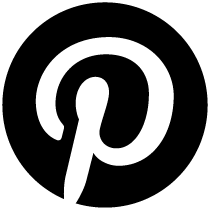What to See Across the US This March
From a group exhibition at the Museum of Contemporary Art, Chicago, examining technology’s influence on painting, to Marc Kokopeli’s reflections on objecthood
From a group exhibition at the Museum of Contemporary Art, Chicago, examining technology’s influence on painting, to Marc Kokopeli’s reflections on objecthood

Marc Kokopeli | Reena Spaulings, New York | 26 January – 8 March

Electronic media is, still, a stubbornly sculptural condition: this is the salient point of Marc Kokopeli’s exhibition at Reena Spaulings, ‘MY TV SHOW I ❤ TV’. Contrary to philosophers’ claims of imminent dematerialization, the artist paints a portrait of a society that may be ‘hyper-digital’ but is nonetheless obsessed with objecthood. Our age has spawned gadgets as absurd as merchandise display cases that double as giant touchpads and finger rings that play on-demand reality television – two devices that Kokopeli sourced from Chinese e-retailer Alibaba to form the basis of artworks on view. At first blush, ‘With Friends Like You’(2023) appears to be a series of small television monitors showing images of cobblestones. Upon closer inspection, they reveal themselves to be vitrines containing physical cobblestones, but whose glass façades are equipped with semi-transparent digital screens that intermittently play video, half-obscuring their contents. These mutant devices collapse numerous economies of virtuality in the staging of merchandise. What is an object, an image, a screen in today’s consumer rituals? With the humble cobblestone, Kokopeli offers a clue: once a potent symbol of urban protest, such pavements are now protected markers for the most gentrified shopping areas of cities – that is to say, physical objects treated as mere signs. – Jeppe Ugelvig
‘The Living End’ | Museum of Contemporary Art, Chicago | 24 January – 1 March

The axis on which ‘The Living End’ turns is there in its subscript: ‘Painting and Other Technologies, 1970–2020’. Painting is positioned not at odds with new apparatuses, but as a technology itself – one of many systems used to make sense of the visual world. As technologies go, however, it’s a porous one, absorbing emergent mechanisms and methods as it advances. ‘The Living End’ explores the ways in which nascent replicative technologies necessitated that artists not just make paintings but also performthe making of a painting. As the exhibition leads viewers from the mid-1960s to the present, a throughline emerges wherein artists harness technologies in service of documenting the performance of painting itself – as a means of both asserting themselves as painters and destabilizing this very stance. – Cat Kron
Carl Cheng | Institute of Contemporary Art, Philadelphia | 17 January – 6 April

On the last March weekend of 1988, visitors to Santa Monica State Beach witnessed something peculiar: a 14-tonne concrete roller, Carl Cheng’s Santa Monica Art Tool (1988), embossing the sand with an aerial view of a Los Angeles-inspired metropolis. Titled Walk on L.A., the topography teemed with cars, motorways, buildings and handprints (a tongue-in-cheek gesture, since Cheng’s artmaking ‘tools’, which yoke his industrial-design acumen to conceptual projects, minimize evidence of his hand). As beachgoers realized the work’s titular directive, the cityscape dissolved back into sand. Periodically activated until 2007, Cheng’s project challenged the prevailing vision of public art – and land art – as permanent, static and monumental. Its ephemerality – an allusion to the precarity of California’s coastal infrastructure amid anthropogenic climate change – feels particularly poignant today, as Los Angeles grapples with the aftermath of devastating wildfires. – Cassie Packard
Bethany Collins | Seattle Art Museum | 14 November – 4 May

Recent months have seen extreme weather act like punctuation: first came September’s Hurricane Helene in the Southeastern US; then, in January, the Los Angeles fires, which continue to burn in the mountains above me as I write. In late November, I happened to see Bethany Collins’s Seattle Art Museum exhibition, ‘At Sea’, during a bomb cyclone in Seattle that killed two people. The weather was a sadly apt backdrop: much of the work on view re-examines canonical literature that contends with loss – of hometowns and wilderness, lovers and countries. Collins appropriates and transforms older texts to reflect each vivid description of disaster, resulting in degraded, half-destroyed artworks that feel almost post-apocalyptic. – Claudia Ross
Gertrude Abercrombie | Carnegie Museum of Art, Pittsburgh | 18 January – 1 June

Gertrude Abercrombie gave things the impression of being marmoreal and cold. Her still lifes, stark as her interiors, feature simple configurations of subjects on smooth, sterile grounds. Her landscapes are desolate and severe, haunted like an Edgar Allan Poe story. Her palette revolves around steely greys, cold whites and serious blacks in combination with occasional rich tones: azure, forest green, shell pink, oxblood. Skies that are grey and overcast from afar often turn out to be infused with lush purples and blues up close; through her handling of paint, austerity acquires a sumptuous aspect. –Sarah Lehrer-Graiwer
Main image: Sarah Sze, Afterimage, Rainbow Disturbance (Painting in its Archive) (detail), 2018, oil paint, acrylic paint, aluminium, archival paper, UV stabilizers, adhesive, tape, ink and acrylic polymers, shellac, and water-based primer on wood, 262 × 550 × 12 cm. Courtesy: Collection Museum of Contemporary Art Chicago, Gift of Mary and Earle Ludgin 2018; photograph: © Angus Mill Photography





















